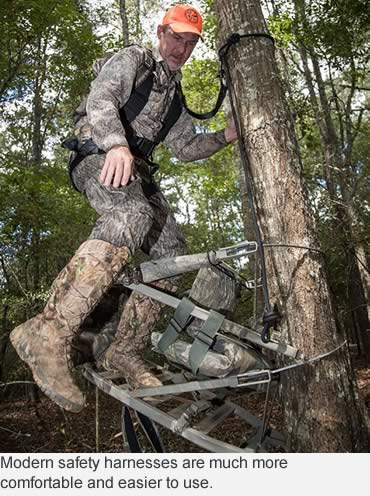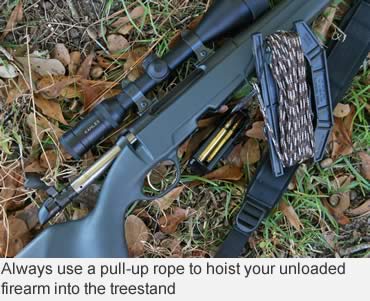Heading into the most active time of Alabama’s hunting seasons, Marisa Futral wants to make sure hunters don’t take one thing for granted – hunter safety.
Futral, the Alabama Wildlife and Freshwater Fisheries (WFF) Division Hunter Safety Coordinator, said January is the time when most people head to the woods to pursue deer, ducks and small game.
Futral wants to continue a positive trend in the number of hunting accidents that have occurred in the state in recent years. She said 17 hunting accidents were reported for the 2020-2021 season, which was down from 22 reported accidents the previous season.
“I’m pretty excited,” Futral said. “We’re tracking in the right direction. We only had one fatality last year and the previous year we had four.”
The one fatality occurred in Fayette County when a hunter failed to identify the target. A group of people were searching for a deer that had been shot. The victim, a neighbor who was assisting in the search, was not wearing hunter orange and unfortunately lost his life.
“Whether hunting or not, during deer season, we recommend wearing hunter orange while in the woods,” Futral said.
 Of the six non-fatal firearms accidents, one involved four victims during dove season. The victims were hit by shotshell pellets.
Of the six non-fatal firearms accidents, one involved four victims during dove season. The victims were hit by shotshell pellets.
“Someone was shooting at a low bird,” Futral said. “Don’t shoot at low birds. Everybody got pellets. Another incident in Tallapoosa County was the same thing, swinging on a low bird.”
The great news from the 2020-2021 season was there were no treestand accident fatalities. The Hunter Safety Section has had an ongoing treestand safety campaign for several years, and the number of accidents has steadily fallen.
The good news continues for the current season with two non-fatal firearms accidents (waterfowl and quail) and two non-fatal treestand accidents.
“Although the numbers are down, I don’t want people to get complacent,” Futral said. “We’re moving in the right direction, but one accident is still too many.”
WFF Hunter Education stresses the following 11 guidelines for using a treestand safely:
1. Always wear a safety harness, also known as a fall-arrest system, when you are in a treestand, as well as when climbing into or out of a treestand. Statistics show that the majority of treestand incidents occur while climbing in and out of a stand.
2. A safety strap should be attached to the tree to prevent you from falling more than 12 inches.
3. Always inspect the safety harness for signs of wear or damage before each use.
4. Follow all manufacturers' instructions for use of a safety harness and stand.
5. Follow the three-point rule of treestand safety. Always have three points of contact to the steps or ladder before moving. This could be two arms and one leg holding and stepping on the ladder or one arm and two legs in contact with the ladder before moving. Be cautious that rain, frost, ice or snow can cause steps to become extremely slippery. Check the security of the step before placing your weight on it.
6. Always hunt with a plan and, if possible, a buddy. Before you leave home, let others know your exact hunting location, when you plan to return and who is with you.
7. Always carry emergency signal devices such as a cell phone, walkie-talkie, whistle, signal flare, PLD (personal locator device) and flashlight at all times and within reach even while you are suspended in your fall-arrest system. Watch for changing weather conditions. In the event of an incident, remain calm and seek help immediately.
8. Always select the proper tree for use with your treestand. Select a live, straight tree that fits within the size limits recommended in your treestand's instructions. Do not climb or place a treestand against a leaning tree.
9. Never leave a treestand installed for more than two weeks since damage could result from changing weather conditions and/or from other factors not obvious with a visual inspection.
10. Always use a haul line to pull up your gear and unloaded firearm or bow to your treestand once you have reached your desired hunting height. Never climb with anything in your hands or on your back. Prior to descending, lower your equipment on the opposite side of the tree.
11. Always know your physical limitations. Don't take chances. Do not climb when impaired by drugs, alcohol or if you're sick or unrested. If you start thinking about how high you are, stop climbing.
Futral thinks the reduction in treestand accidents is a result of several different factors.
 “I think we’re doing a better job with outreach on wearing a harness and peer pressure from their family to make sure they wear a harness,” she said. “If you’re hunting from a treestand, make sure you’re wearing a harness and make sure you’re attached to the tree as soon as your feet leave the ground.
“I think we’re doing a better job with outreach on wearing a harness and peer pressure from their family to make sure they wear a harness,” she said. “If you’re hunting from a treestand, make sure you’re wearing a harness and make sure you’re attached to the tree as soon as your feet leave the ground.
“I can’t emphasize that enough. Harnesses are a lot more comfortable and a lot easier to put on than they used to be. There’s no excuse not to use one,” she said.
Weather can also play a role in safety, especially when the temperatures get near or below freezing, she noted.
“A lot of our treestand accidents happen in January,” she said. “When it’s colder, the steps on a ladder stand or shooting house are slick. There may be early morning frost on the steps. We urge people to make sure they have three points of contact when you’re climbing steps, either two feet and a hand or two hands and a foot. If you do slip, you have a lot better chance to catch yourself.”
Futral also urges hunters to review and adhere to the 10 commandments of firearms safety:
1. Treat every firearm as if it is loaded.
2. Control the muzzle of your firearm. Keep the barrel pointed in a safe direction. Never point a firearm at anything that you do not wish to shoot. Insist that your shooting and hunting companions do the same.
3. Be sure of your target and beyond. Positively identify your target before you fire, and make sure no people, livestock, roads or buildings are beyond the target.
4. Never shoot at water or a hard, flat surface. A ricocheting bullet cannot be controlled.
5. Don’t use a scope for target identification; use binoculars.
6. Never climb a tree, cross a fence or jump a ditch with a loaded firearm.
7. Store guns and ammunition separately. Store firearms under lock and key and use a gun case to transport firearms.
8. Make sure your barrel and action are clear of all obstructions.
9. Unload firearms when not in use. Never take someone’s word that a firearm is unloaded. Check it yourself.
10. Avoid drugs and alcohol when hunting or shooting. Some over-the-counter medicines can cause impairment.
– Photos courtesy Billy Pope, David Rainer/ADCNR.